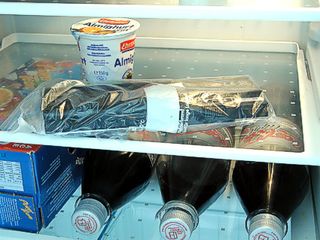Squeezing More Life Out of Your Notebook's Battery Part I
OEM spin aside, notebook battery lives just are not up to what consumers and business want. Industry group Mobile PC EBLWG says laptops that run eight hours on a charge will be available by 2008. But how do they expect to pull the feat off and what can you do in the meantime to squeeze more life out of your notebook's battery? Keywords
Battery In The 'fridge?
By contrast with NiMH batteries, Li-Ion varieties are not designed for long-term storage (up to several years). As soon as the Li-Ion cells are manufactured, these batteries begin to decline all by themselves. In fact, storing a fully charged Li-Ion battery at high temperatures will cause an irreversible and noticeable decline in capacity in anywhere from six to 12 months. The speed of capacity loss is strongly related to the level of battery charge and the ambient temperature while in storage. If a notebook is going to be run entirely (or almost entirely) from the wall socket, it makes sense to remove the battery from the notebook.
Many battery makers recommend storing these batteries at temperatures of around 60° F (15° C) or lower, at about a 40% level of charge. The charge level should be no lower to avoid potential damage during deep discharge. The internal power consumption level is around 8%, which explains why the same makers also recommend recharging a stored battery to the 40% charge level once every six months or so.

It's advisable to protect the battery from moisture and humidity by packing it in a plastic bag before storing it in the refrigerator.
Li-Ion and NiMH batteries are best stored in the refrigerator. To protect them from condensation and moisture pack them inside a freezer bag beforehand (a heavy-duty Ziploc or similar bag works well; double-bagging is not out of the question).
Sign up to get the BEST of Tom's Guide direct to your inbox.
Get instant access to breaking news, the hottest reviews, great deals and helpful tips.
Current page: Battery In The 'fridge?
Prev Page Battery Care And Preservation Next Page Buyer Beware 1: Old Battery In A New Notebook-
denist44 As far as I am concerned ,the temperature, amount of usage and nature of usage contributed signfically to the laptop battery lifespan.On the other hand, You can lower screen brightness, reduce CPU processing speed, chance cooling method, and other settings available on your laptop to prolong your battery life.HP Probook 4410s battery battery for HP Probook 4410sReply -
denist44 As far as I am concerned ,the temperature, amount of usage and nature of usage contributed signfically to the laptop battery lifespan.On the other hand, You can lower screen brightness, reduce CPU processing speed, chance cooling method, and other settings available on your laptop to prolong your battery life.Reply
